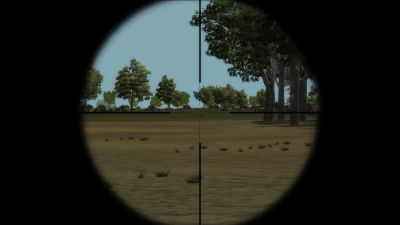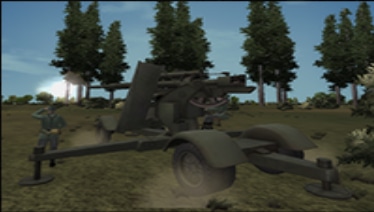Difference between revisions of "FlaK. 36"
| Line 24: | Line 24: | ||
{| class="wikitable floatright" | {| class="wikitable floatright" | ||
| colspan="2" style="text-align: center;" | [[File: | | colspan="2" style="text-align: center;" | [[File:88 sight.png|400px]] | ||
|- style="background:#666600; color:#fff;" | |- style="background:#666600; color:#fff;" | ||
| colspan="2" style="text-align: center;" | '''Main Gun Optics''' | | colspan="2" style="text-align: center;" | '''Main Gun Optics''' | ||
Latest revision as of 04:11, 12 August 2021
History

| |
| Main Gun Optics | |
| Specifications | |
| Designation | ZF.20 |
| Magnification | 4X |
| Field of View | 17° |
The FlaK. 36 was actually developed during the interwar years by German engineers working in Sweden, who managed to produce probably the most famous and effective gun system in the war. It was originally designed as an AA gun, but Spanish experience showed its amazing utility against vehicles as well. Fortunately for Rommel, the eventual German leader of the Afrika Korps, the armor-piercing shells needed against tanks were already distributed to FlaK units for emergency use when in 1940 he was confronted by a breakout of the so-called ‘impenetrable’ British Matilda II’s at Arras – a scratch force of FlaK.36’s defeated them at point-blank range. The 88 later came to be so feared that some British crews abandoned their tanks after even a near miss by an 88, knowing that the remarkable gun rarely missed a second time and that to be hit by an “88” usually meant very bad things.
It remained a potent gun throughout WW2 – even at the end, the 88 could frontally penetrate any tank in the British or American armored tank inventory.
Game Play
The Flak. 36 takes some finesse to use effectively, but in the hands of a skilled operator it can be devastating. “Flak. 88’s” as they are often - but wrongly - called can quite simply change the entire fortune of an attack or defense depending on if they rule the field of fire or get taken out early by their opponents.
It is able to move on its own by manhandling around like other AT guns, but due to how slow this is it is really only useful for emergencies and to relocate the gun slightly to fire out obstacles. You need to get a SdKfz.7 to pull this gun to a clear vantage point with long sightlines. 88s should always deploy to locations under trees or bushes, as they are most-favored high value targets for Allied strafing. Like the Bofors, it’s useful to place it on a hill, below the crest to prevent skylining. If you’re under fire, undeploy and roll down the hill until you are safe.
Because of your ability to dominate an entire battlefield, you are a prime target for EVERYONE: every tank, plane, gun, and infantry will cheerfully use everything they’ve got to get rid of you. As a result of this, it’s sometimes a good idea to have a 232 or other AFV nearby with a rapid-fire gun to deal with aircraft and/or If it’s a big enough vehicle, have it park in front of you – your gun is high enough to fire over almost anything, and their chassis will protect you from the spatter of long-range MG fire.
The FlaK. 36 commander has a cross hair and rangefinder so you should be able to dial in the ranges to a number of landmarks and be ready to re-set your sights to the proper range. With the range dialed properly in, the gun is incredibly accurate. First-shot hits at 2000m are the norm with a skilled user, and even a novice can easily kill enemy tanks at 1500m. Some vehicles like the Char. or the Matilda may prove a bit tougher to crack, but even they rarely stand a chance at 1000m or so.
